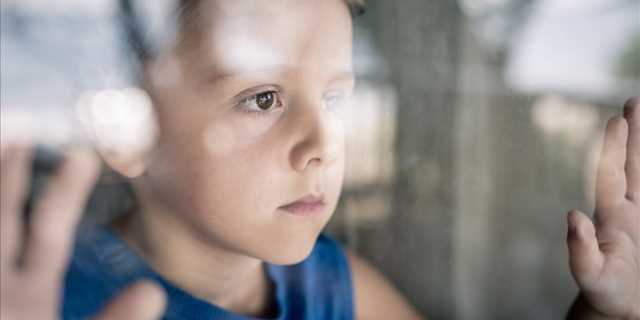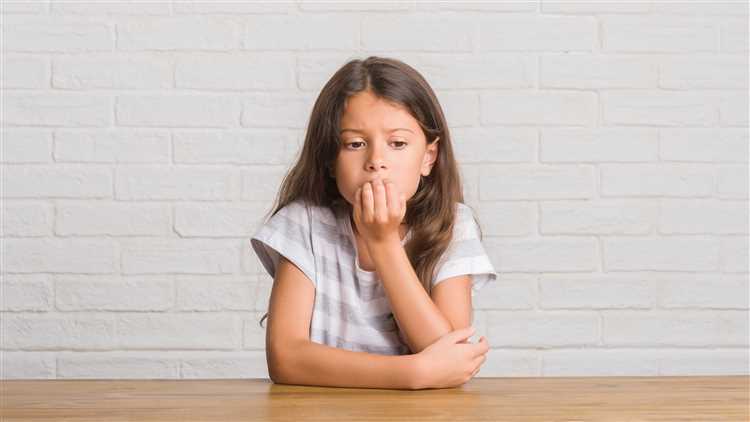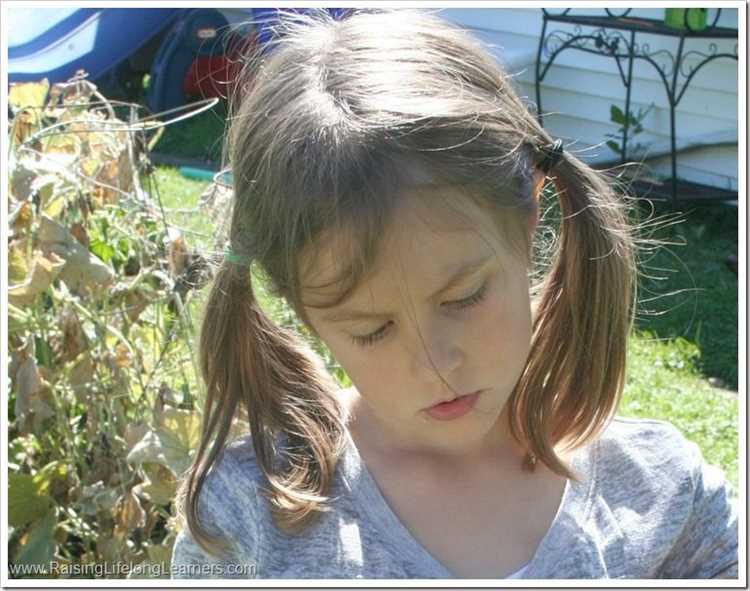Anxiety in children and young people is a common mental health issue that can have significant impacts on their overall well-being and development. It is characterized by feelings of fear, worry, and unease that can interfere with their daily activities and relationships. Understanding the causes, symptoms, and treatment options for anxiety in children and young people is crucial for parents, caregivers, and healthcare professionals in order to provide the necessary support and interventions.
The causes of anxiety in children and young people can be multifaceted. They may include genetic factors, family history of anxiety disorders, traumatic events, chronic stress, and environmental factors such as parenting styles and school pressures. Identifying the underlying causes of anxiety is essential in order to address them effectively and provide appropriate interventions.
Common symptoms of anxiety in children and young people can manifest in various ways. They may experience physical symptoms such as rapid heart rate, shortness of breath, stomachaches, headaches, and muscle tension. They may also exhibit emotional symptoms such as excessive worry, fear of specific situations or objects, restlessness, irritability, difficulty sleeping, and difficulty concentrating. These symptoms can vary in severity and frequency, and may significantly impact their everyday life.
Treatment options for anxiety in children and young people usually involve a combination of psychotherapy, medication, and lifestyle changes. Psychotherapy, such as cognitive-behavioral therapy (CBT), can help children and young people understand their anxiety, develop coping skills, and change their negative thinking patterns. Medication may be prescribed in severe cases or when other treatment options are ineffective. Additionally, lifestyle changes such as regular exercise, healthy eating, stress management techniques, and a supportive and nurturing environment can also play a crucial role in managing anxiety and promoting overall well-being.
Overall, it is important to recognize and address anxiety in children and young people in a timely and appropriate manner. By understanding the causes, symptoms, and treatment options, we can provide the necessary support and interventions to help them navigate their anxiety and thrive in their daily lives.
Anxiety in Children and Young People:
Anxiety is a common mental health condition that affects children and young people. It is characterized by feelings of fear, worry, and unease that can interfere with daily activities and social interactions.
There are several potential causes of anxiety in children and young people:
- Genetics: Some children may be more prone to anxiety due to their genetic makeup. If a family member has a history of anxiety disorders, the risk is higher.
- Environmental factors: Certain environmental factors, such as a traumatic event or stressful home environment, can trigger or contribute to anxiety in children and young people.
- Brain chemistry: Imbalances in brain chemicals, such as serotonin and dopamine, can play a role in the development of anxiety.
It is important to be aware of the symptoms of anxiety in children and young people:
- Excessive worry: Children with anxiety may worry excessively about everyday things, such as school, friends, or family.
- Physical symptoms: Anxiety can manifest as physical symptoms, including stomachaches, headaches, and trouble sleeping.
- Avoidance: Children with anxiety may avoid certain situations or activities that make them feel anxious or uncomfortable.
- Restlessness: Anxiety can also cause restlessness, irritability, and difficulty concentrating.
Treatment options for anxiety in children and young people include:
- Therapy: Cognitive-behavioral therapy (CBT) is often used to help children and young people learn coping strategies and challenge negative thought patterns.
- Medication: In some cases, medication may be prescribed to help manage anxiety symptoms. However, this is typically used as a last resort.
- Lifestyle changes: Encouraging healthy habits, such as regular exercise, a balanced diet, and quality sleep, can help reduce anxiety levels.
In conclusion, anxiety is a common mental health condition that can affect children and young people. Recognizing the potential causes and symptoms of anxiety is important in order to provide appropriate support and treatment options.
Causes of Childhood Anxiety:
Anxiety in children can be caused by a variety of factors. It is often a result of a combination of genetic, environmental, and psychological factors. Some common causes of childhood anxiety include:
- Genetics: Children with a family history of anxiety disorders are more likely to develop anxiety themselves. Studies have shown that there is a hereditary component to anxiety.
- Environmental Factors: Certain environmental factors can contribute to the development of anxiety in children. These may include a history of neglect or abuse, living in a high-stress environment, or experiencing a traumatic event.
- Parental Influence: Parental behavior and parenting style can also play a role in the development of anxiety in children. If parents are overly protective, overly critical, or prone to anxiety themselves, this can increase the likelihood of a child developing anxiety.
- Temperament: Some children may be more temperamentally prone to anxiety. They may be naturally more cautious, shy, or sensitive, which can make them more vulnerable to developing anxiety.
- School and Peer Pressure: School-related stress, academic pressure, and social interactions with peers can also contribute to the development of anxiety in children. Bullying, peer rejection, or feelings of inadequacy can all trigger anxiety in young people.
- Changes and Transitions: Significant life changes or transitions, such as moving to a new school, the birth of a sibling, or parents’ divorce, can also contribute to feelings of anxiety in children.
It’s important to note that these are just some of the potential causes of childhood anxiety and that each child’s experience is unique. Understanding the causes can help guide treatment and support for children with anxiety, but it’s always important to seek professional guidance and consultation for accurate assessment and appropriate intervention.
Symptoms of Anxiety in Children:
- Excessive worrying and fear
- Difficulty concentrating
- Restlessness or feeling on edge
- Physical symptoms such as headaches, stomachaches, or muscle tension
- Avoidance of certain situations or activities
- Trouble sleeping or nightmares
- Feeling irritable or easily upset
- Constant need for reassurance
- Panic attacks
- Social withdrawal or isolation
In children, anxiety symptoms can present differently than in adults. They may have difficulty expressing their worries verbally, making it important for parents and caregivers to be observant of changes in behavior or physical symptoms.
It’s worth noting that occasional feelings of worry and fear are normal in children, but if these feelings persist and start interfering with their daily functioning and overall well-being, it may indicate an anxiety disorder.
If you notice any of these symptoms in your child, it is recommended to seek professional help from a mental health provider who specializes in working with children and adolescents.
Treatment Options for Childhood Anxiety:
Childhood anxiety can be effectively treated through a combination of therapy, medication, and support from parents and teachers. The following treatments are commonly used:
- Cognitive Behavioral Therapy (CBT): This form of therapy helps children identify and challenge negative thought patterns and develop healthier coping mechanisms. It focuses on changing the child’s behavior and thinking patterns.
- Exposure Therapy: This type of therapy involves gradually exposing the child to the situations or objects that trigger their anxiety, helping them develop resilience and overcome their fears.
- Medication: In some cases, medication may be prescribed to manage severe anxiety symptoms. Antidepressants and anti-anxiety medications can help reduce anxiety levels and improve day-to-day functioning.
- Parental involvement: Parents play a crucial role in supporting and helping their child manage anxiety. They can learn strategies to promote relaxation, practice open communication, and create a supportive environment at home.
- School-based interventions: Teachers and school counselors can implement strategies to support anxious children at school. This may include providing a safe space, offering emotional support, and working with parents to create a consistent approach.
- Stress reduction techniques: Teaching children relaxation techniques, such as deep breathing exercises and mindfulness, can help them manage anxiety symptoms in the moment.
It is important to remember that every child is unique, and what works for one child may not work for another. A combination of different treatment modalities and ongoing support is often the most effective approach to managing childhood anxiety.
Behavioral Therapies for Childhood Anxiety:
Behavioral therapies are commonly used to treat childhood anxiety and can be very effective in helping children manage and overcome their fears and anxieties. These therapies focus on changing the child’s behaviors and thought patterns to reduce anxiety and improve coping skills. Some common behavioral therapies for childhood anxiety include:
- Cognitive-Behavioral Therapy (CBT): CBT is a widely used therapy for childhood anxiety. It helps children identify and challenge negative thoughts and beliefs that contribute to their anxiety. CBT also teaches children techniques to manage their anxiety, such as relaxation exercises and gradual exposure to feared situations.
- Exposure Therapy: Exposure therapy involves gradually exposing the child to their fears or anxieties in a controlled and supervised manner. This allows the child to confront their fears and learn that they are manageable. Over time, exposure therapy can help reduce the child’s anxiety response and increase their confidence in coping with anxiety-provoking situations.
- Relaxation Techniques: Relaxation techniques, such as deep breathing exercises, muscle relaxation, and visualization, can help children calm their bodies and minds when they are feeling anxious. These techniques can be taught to children and practiced regularly to help them manage their anxiety symptoms.
- Social Skills Training: Children with anxiety may struggle with interacting with others and making friends. Social skills training can help them develop appropriate social skills, such as initiating conversations, maintaining eye contact, and listening actively. This can boost their confidence and reduce social anxiety.
- Parent-Child Interaction Therapy (PCIT): PCIT is a therapy that involves the parent and child working together to improve the child’s behavior and reduce their anxiety symptoms. It focuses on enhancing the parent-child relationship and teaching parents specific strategies for managing their child’s anxiety. PCIT can be especially helpful for young children with anxiety.
It is important for parents and caregivers to work closely with a qualified mental health professional to determine which behavioral therapy approach is best suited for their child’s needs. The therapist will tailor the treatment plan to address the child’s specific anxiety symptoms and provide ongoing support and guidance throughout the therapy process.
Medications for Childhood Anxiety:
While therapy and lifestyle changes are often the first line of treatment for childhood anxiety, medication can also be an effective option in certain cases. Medications can help manage symptoms of anxiety and improve overall functioning in children and young people. It is important to note that medication should always be used under the guidance and supervision of a qualified healthcare professional.
Types of medications:
- Selective serotonin reuptake inhibitors (SSRIs): SSRIs are a type of antidepressant medication that can also help alleviate anxiety symptoms. Examples of SSRIs commonly used to treat childhood anxiety include fluoxetine (Prozac), sertraline (Zoloft), and escitalopram (Lexapro).
- Serotonin-norepinephrine reuptake inhibitors (SNRIs): SNRIs are another type of antidepressant that can be effective for treating anxiety. Examples include venlafaxine (Effexor) and duloxetine (Cymbalta).
- Benzodiazepines: Benzodiazepines are sedative medications that can help reduce anxiety symptoms. However, they are typically only used on a short-term basis due to the risk of dependence and side effects. Examples include diazepam (Valium) and lorazepam (Ativan).
- Buspirone: Buspirone is an anti-anxiety medication that is commonly used for generalized anxiety disorder. It is considered to have a lower risk of side effects and dependence compared to benzodiazepines.
Considerations:
Before starting any medication for childhood anxiety, it is important to consider the following:
- Consult with a healthcare professional: A qualified healthcare professional will be able to evaluate the child’s symptoms and provide recommendations for appropriate medication.
- Weigh the risks and benefits: It is essential to understand the potential risks and benefits of medication, including possible side effects and interactions with other medications.
- Monitor for effectiveness: Regular monitoring of the child’s symptoms and functioning is crucial to determine if the medication is providing the desired results.
- Complement with therapy: Medication should be used in conjunction with therapy and other forms of treatment to address the underlying causes of anxiety.
Conclusion:
Medication can be a helpful tool in the treatment of childhood anxiety, especially when used in combination with therapy. However, it should be used judiciously and under the supervision of a healthcare professional to ensure the best possible outcomes for the child.
Supportive Techniques for Childhood Anxiety:
Supportive techniques play a crucial role in helping children cope with anxiety. These techniques provide children with the tools they need to manage their anxiety and build resilience. Here are some supportive techniques that can be effective in helping children with anxiety:
- Encouraging open communication: Creating a safe and open environment where children feel comfortable expressing their fears and worries can help them process their thoughts and emotions. Encourage children to talk about their anxiety and listen actively without judgment.
- Teaching relaxation techniques: Relaxation techniques, such as deep breathing exercises and progressive muscle relaxation, can help children calm their minds and bodies when they are feeling anxious. Teaching these techniques and practicing them with the child can be beneficial.
- Providing reassurance: Offering reassurance and support can help alleviate a child’s anxiety. Remind them that you are there for them and that their fears are valid. Provide them with information and facts to help them understand their anxiety better.
- Creating a structured routine: Establishing a predictable and structured routine can help reduce anxiety in children. Having consistent meal times, bedtimes, and daily activities can create a sense of safety and stability, which can be comforting for anxious children.
- Encouraging healthy coping mechanisms: Promote healthy coping mechanisms, such as engaging in physical activity, journaling, or engaging in creative outlets like art or music. Encourage children to find activities they enjoy and that help them release stress and anxiety in a healthy way.
- Gradual exposure to fears: If a child has specific fears or phobias, gradually exposing them to these fears in a controlled and supportive manner can help desensitize them and reduce anxiety over time. This technique should be done with the guidance of a therapist or mental health professional.
It is important to remember that each child is unique, and what works for one child may not work for another. It is crucial to tailor these techniques to meet the individual needs and preferences of the child. Seeking professional help from a therapist or mental health professional is recommended for children with significant anxiety symptoms.
Tips for Parents to Help Children with Anxiety:
1. Communicate and listen: Create an open and safe space for your child to express their feelings. Encourage them to talk about their worries and fears, and listen attentively without judgment.
2. Validate their emotions: Let your child know that it is okay to feel anxious and that you understand their feelings. Avoid dismissing or minimizing their concerns.
3. Provide reassurance: Help your child understand that anxiety is a normal response to certain situations, and that it can be managed. Offer words of comfort and support.
4. Teach relaxation techniques: Teach your child techniques such as deep breathing exercises, progressive muscle relaxation, or guided imagery to help them calm down during moments of anxiety.
5. Establish a routine: Create a predictable and stable routine that includes regular sleep, meal times, and activities. This can help your child feel a sense of security and control.
6. Encourage healthy lifestyle habits: Promote regular exercise, a balanced diet, and adequate sleep, as these factors can contribute to better emotional well-being.
7. Practice problem-solving skills: Help your child develop problem-solving skills by encouraging them to brainstorm solutions to their worries or fears. Guide them through the process of evaluating potential solutions and making a plan.
8. Limit exposure to triggers: Identify triggers that may cause or worsen your child’s anxiety, such as certain TV shows, news stories, or social situations. Limit their exposure to these triggers as much as possible.
9. Seek professional help if needed: If your child’s anxiety is significantly impacting their daily life or if you are concerned about their well-being, seek professional help from a therapist or counselor experienced in working with children’s anxiety.
10. Be patient and supportive: Remember that managing anxiety takes time and effort. Be patient with your child and provide ongoing support and encouragement throughout their journey.
Questions and answers
What are some common causes of anxiety in children and young people?
There are several common causes of anxiety in children and young people, including genetic factors, family history of anxiety, traumatic experiences, and high levels of stress or pressure.
What are some symptoms of anxiety in children and young people?
Some common symptoms of anxiety in children and young people include constant worrying, restlessness, irritability, difficulty concentrating, fatigue, and physical symptoms like headaches or stomachaches. They may also experience changes in sleep patterns or avoid certain situations or activities.
How is anxiety in children and young people diagnosed?
Anxiety in children and young people is typically diagnosed through a combination of clinical interviews, questionnaires, and observation of their behavior. The symptoms and duration of symptoms are assessed to determine if they meet the criteria for an anxiety disorder.
What are some effective treatment options for anxiety in children and young people?
There are several effective treatment options for anxiety in children and young people. These include cognitive-behavioral therapy (CBT), medication (such as selective serotonin reuptake inhibitors), and lifestyle changes such as regular exercise and stress management techniques. In some cases, a combination of treatments may be recommended.
How can parents and caregivers support children and young people with anxiety?
Parents and caregivers can support children and young people with anxiety by creating a safe and supportive environment, encouraging open communication, and helping them develop coping strategies. They can also seek professional help, educate themselves about anxiety, and be patient and understanding throughout the treatment process.


